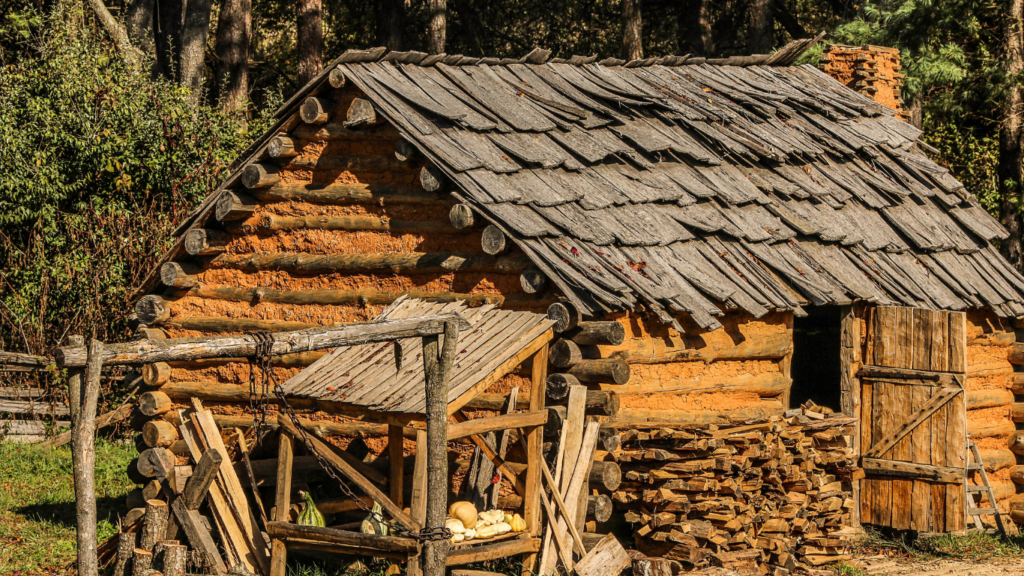Importance of Building a Shelter
Survival in the wild hinges on three primary factors: protection, security, and comfort. A well-built shelter addresses all three. Exposure to harsh elements like:
- rain
- snow
- extreme temperatures
quickly leads to hypothermia or heatstroke. Building a shelter provides a buffer against these dangers.
Wildlife encounters present another risk. While not all animals are threats, some, like bears and wolves, pose serious hazards. Shelters create a physical barrier between you and potentially aggressive wildlife, reducing the likelihood of an unwanted encounter.
Comfort in the wilderness cannot be overstated. After a long day of navigating rugged terrain, the body needs rest. Shelters offer needed respite, allowing for recovery and maintaining morale. Proper rest contributes to clear thinking and better decision-making, which are crucial in survival scenarios.
Shelters also allow for environmental customization. For instance, insulating the shelter with leaves or adding a fire pit nearby enhances warmth. Customization improves overall survival chances, making the time and effort invested worthwhile.
Having a shelter in the wild accomplishes essential survival needs by offering protection from elements, safety against wildlife, and the comfort to rest and recuperate.
Choosing the Right Location
Finding the right spot for your shelter is critical for safety and comfort. Here are key considerations when choosing a location.
Safety Considerations
Safety is paramount when selecting a shelter spot. Avoid areas near water to reduce the risk of flooding and insect infestations. Stay clear of animal trails or dens to minimize the chance of wildlife encounters. Choose higher ground, as it tends to be drier and offers better protection from the weather.
Proximity to Resources
Being close to essential resources ensures convenience and survival. Set up near a clean water source, but maintain a safe distance to avoid flood risks. Find an area with ample firewood and edible plants. Ensure the ground is relatively flat for better stability and comfort.
Gathering Materials
Finding the right materials determines the durability and comfort of your shelter. Prioritize both natural and man-made materials, as each has unique benefits.
Natural Materials
Natural materials are readily available in most environments. Branches and limbs from trees work well for creating a frame. Look for strong, flexible branches to ensure stability. Leaves and moss serve as excellent insulation and roofing. Collect as much as possible to cover the entire structure, keeping it dry and warm. Rocks and logs can add structural support around the base.
Man-Made Materials
Man-made materials boost the effectiveness of your shelter if available. A tarp or poncho creates a waterproof roof quickly. Paracord or rope is invaluable for securing branches and other components together, ensuring the shelter’s stability. Plastic bags are useful for waterproofing and can store collected materials. If packing light, consider including a small, multi-purpose tool like a knife for cutting and shaping materials.
Gathering high-quality materials makes a substantial difference in the shelter’s overall effectiveness and longevity.
Types of Shelters
Creating a shelter in the wild depends on available materials, weather conditions, and personal skills. Understanding different types shelters helps make informed decisions.
Lean-To
A Lean-To uses a simple, open structure. I lean a large branch or pole at an angle against a support, like a tree or an established frame. Covering the branch with smaller branches, leaves, or a tarp offers basic protection from wind and rain. This structure works well in milder climates, providing shelter without extensive construction.
A-Frame
An A-Frame resembles a tent, offering better protection. I prop up two sturdy poles in an ‘A’ shape, securing them at the top. Adding crosspieces for stability, I then drape branches, leaves, or a tarp over the frame. This design withstands heavier rain and wind, making it suitable for harsher conditions.
Debris Hut
A Debris Hut excels in cold environments. I start by placing a sturdy ridgepole between two supports. Then, I stack smaller branches along both sides, creating a tepee shape. Covering the structure with thick layers of leaves, grass, or pine needles provides insulation. This compact design retains body heat effectively, essential for survival in colder climates.
Step-by-Step Guide

Constructing a wilderness shelter involves several methodical steps. Each step ensures the shelter provides optimal protection, security, and comfort.
Step 1: Select Your Site
I prioritize picking an appropriate site for my shelter. Choosing higher ground prevents floods, and avoiding dead trees reduces the risk of falling branches. I look for natural windbreaks like rocks or dense vegetation to enhance protection.
Step 2: Gather Materials
I gather sturdy materials before construction. Branches and logs form the framework, while leaves and grasses provide insulation. If available, I use tarp or plastic sheets for added weatherproofing.
Step 3: Construct the Framework
I start the framework by placing a long, sturdy branch between two trees for a Lean-To. For an A-Frame, I tie together two Y-shaped branches and lean them against a central ridgepole.
Step 4: Add Insulation
I add layers of leaves, grasses, and moss to insulate my shelter. This natural insulation helps retain heat and provides cushioning. Any protruding sharp objects are covered to ensure comfort.
Step 5: Final Adjustments
I adjust my shelter to ensure it’s stable and secure, reinforcing weak points with extra branches. I check the comfort level by lying inside and making necessary changes to stay warm and protected all night.
Tips for Building a Shelter in Different Environments
Constructing a shelter varies significantly across environments. Each setting requires unique materials and techniques for effective protection.
Forested Areas
In forested areas, use abundant natural materials. Gather branches, leaves, and pine needles. Construct a Lean-To using sturdy branches against a tree or a support. Cover the structure with leaves, pine needles, and branches for insulation and weather protection. Clear the ground of debris to prevent insect intrusion and enhance comfort.
Deserts
Desert shelters focus on sun protection and maintaining cool temperatures. Create a shade structure using a tarp, blanket, or large branches. Elevate one side to allow ventilation while providing sufficient shade. Use rocks and sand to anchor the structure. Dig a shallow trench for sleeping to stay cooler. Look for natural features like rock formations for added shelter.
Snowy Conditions
In snowy conditions, insulation is key. Construct a snow trench or a snow cave. For a snow cave, find a deep snowdrift, dig a tunnel, and hollow out a chamber. Ensure proper ventilation by creating a small air hole. Use snow blocks to build walls and a roof for a snow trench. Place pine branches or any available insulating materials on the floor to prevent contact with the cold ground.





